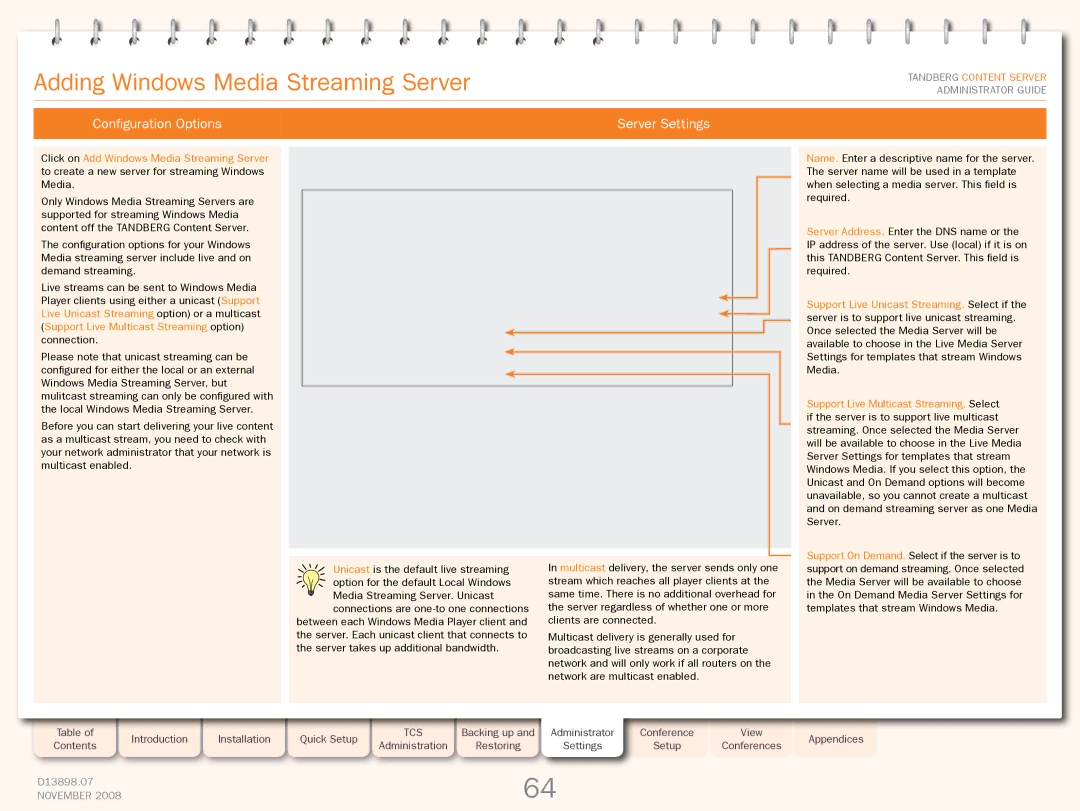1D13898.07 specifications
The TANDBERG 1D13898.07 is a high-performance video conferencing unit designed to enhance communication experiences in both small and large enterprises. This model is well-regarded for its robust features that cater to a range of professional environments, making it an essential tool for remote collaboration.One of the main features of the TANDBERG 1D13898.07 is its exceptional video quality. It supports HD video resolutions up to 1080p, ensuring crisp, clear visuals that facilitate effective communication. The unit employs advanced video processing technologies to optimize picture quality, even in variable network conditions. This makes it ideal for creating lifelike interaction during meetings, presentations, and training sessions.
In addition to outstanding video quality, the TANDBERG 1D13898.07 integrates a powerful audio system. It includes high-fidelity microphones and speakers, designed to provide clean audio reproduction without distortion. Features such as automatic gain control and echo cancellation enhance the user experience, ensuring that conversations flow naturally and that participants can be heard clearly regardless of their position in the room.
Another significant characteristic of this unit is its ease of use. The TANDBERG 1D13898.07 is equipped with an intuitive user interface, allowing users to schedule and join meetings seamlessly. The integration with various calendar applications streamlines the process of setting up video calls, ensuring that users can connect with colleagues or clients at the click of a button.
The unit supports multiple connectivity options, including HDMI, USB, and network protocols such as SIP and H.323. This versatility allows it to be easily integrated into existing IT infrastructures, providing flexibility for organizations. Moreover, it supports content sharing capabilities, enabling participants to present documents, videos, and other materials in real-time, enhancing collaborative efforts during meetings.
Security is a top priority for businesses today, and the TANDBERG 1D13898.07 addresses this with robust encryption standards for data transmission. This ensures that sensitive information remains protected during video calls, adhering to compliance requirements across various industries.
In conclusion, the TANDBERG 1D13898.07 is a powerful video conferencing solution, combining high-quality video and audio capabilities with user-friendly features and strong security measures. Its advanced technologies make it a valuable asset for organizations looking to improve communication and collaboration, ensuring that teams remain connected and productive, no matter where they are in the world.

